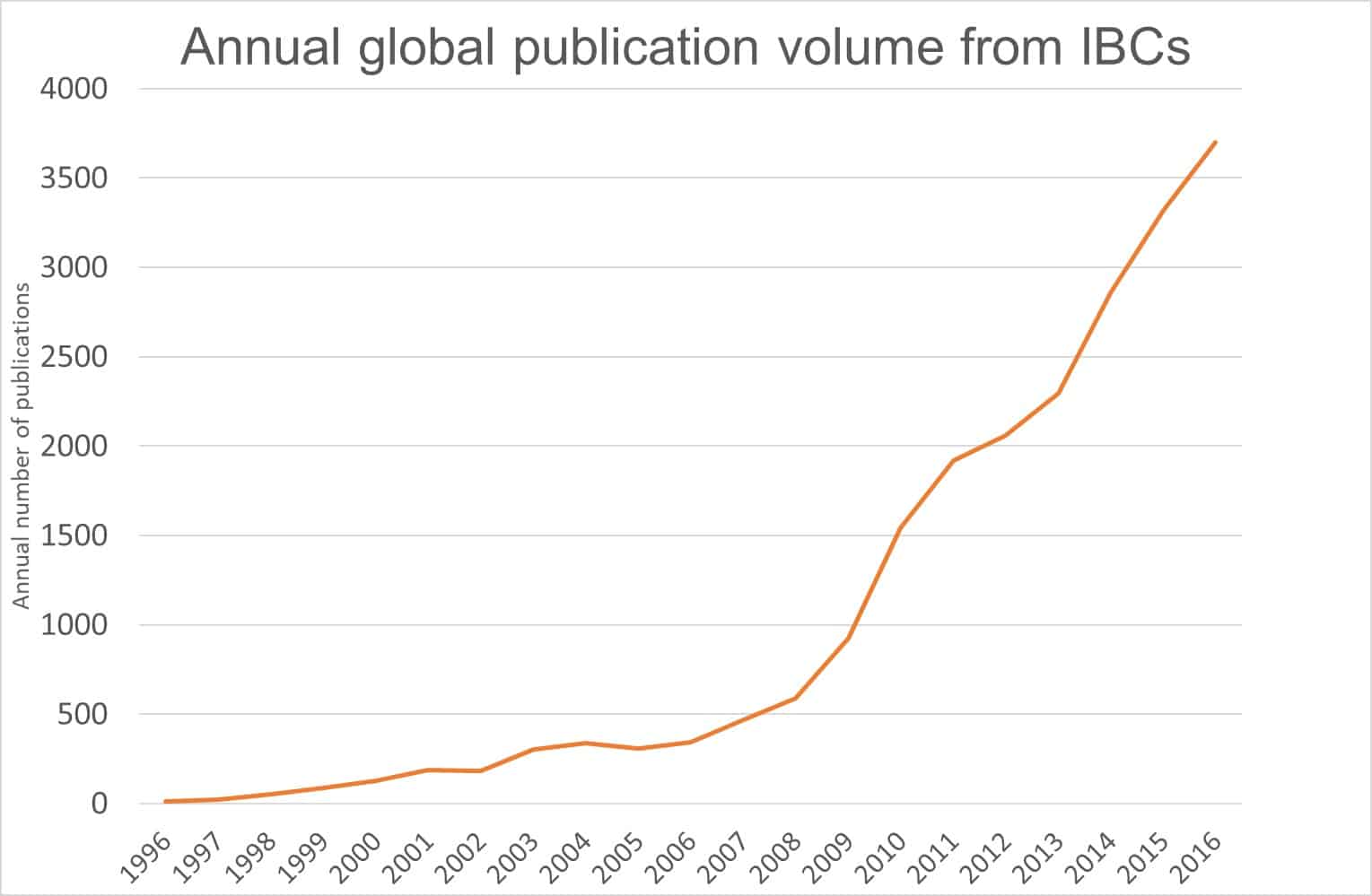
Illustration: Hans Pohl.
One way of internationalising a university is to establish campuses abroad. Few Swedish universities have done so, but the option is often discussed. STINT, in collaboration with a research group at the State University of New York at Albany, studies for instance how research at International Branch Campuses (IBCs) develops.
Globally, 93 of the 250 IBCs listed by the Cross-Border Education Research Team (C-BERT) have more than 10 publications. The figure above shows the strong increase in publications. China is the country with the highest total annual publication volume from IBCs and with 33 entities it also has the highest number of IBCs. While China and the United Arab Emirates (with 32 IBCs) lead in the number of IBCs, Malaysia and Qatar have approximately the same number of IBCs actively conducting research. When comparing the publications from IBCs with the total publication volume in the host country, Qatar has by far the largest share of IBC publications – about one third of its output comes from IBCs.
Almost without exception, IBC publications show higher citation impact than the average publications in the host country. At the same time, the home institutions typically have even higher citation impacts. As expected, IBCs are more international in their research than both host countries and home institutions, when the share of international co-publications is considered.
STINT’s research collaboration with
C-BERT has so far resulted in two publications:

